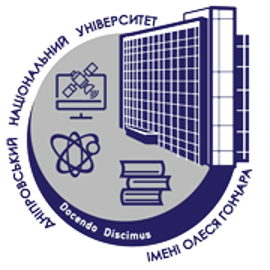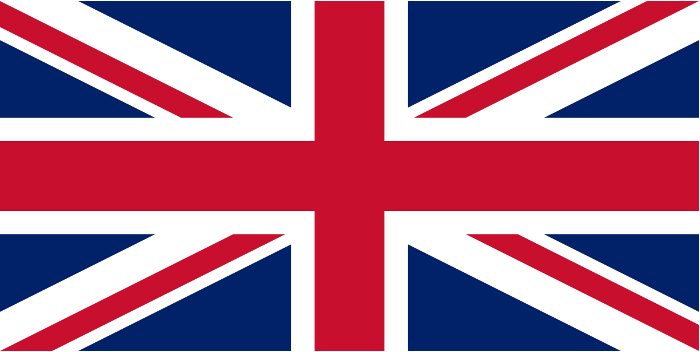Оформлення статті
Стаття подається українською або англійською мовами в електронному вигляді. Остаточний варіант англомовної статті подається для друку виключно англійською мовою).
Структура статті та послідовність її структурних елементів:
- Індекс УДК
- ініціали, прізвища всіх авторів (українською мовою)
- місце роботи або навчання (офіційна назва установи), місто, країна (українською мовою)
- назва статті (українською мовою)
- E-mail та ORCID кожного з авторів
- Анотація (українською мовою)
- Ключові слова (українською мовою)
- ініціали, прізвища всіх авторів (англійською мовою)
- місце роботи або навчання (офіційна назва установи), місто, країна (англійською мовою)
- назва статті (англійською мовою)
- Анотація (англійською мовою)
- Ключові слова (англійською мовою)
- Текст статті
- REFERENCES
Структурні елементи змісту статті (опис)
Назва статті повинна коротко інформувати про її зміст, містити не більше 9 слів та словосполучень.
Анотація: українською мовою - обсяг 1600–2000 знаків; англійською мовою 2300–3000 знаків з пробілами. Текст анотації повинен бути чітким та інформативним (не містити загальних фраз), оригінальним, змістовним (відображати основний зміст статті), структурованим (написаним як один абзац тексту, але слідувати послідовності опису результатів у статті), Анотація повинна містити такі елементи: вступ, мета дослідження, методи дослідження (стисло і якщо є необхідність), наукова новизна, основні результати, висновки. Наприкінці можна навести висловлені в статті оцінки, пропозиції, гіпотези, рекомендації. Реферат повинен бути зрозумілим без ознайомлення з основним змістом статті. Використовуйте активний, а не пасивний залог («The study tested», а не «It was tested in this study»). Уникайте зайвих вступних слів та, значної кількості складнопідрядних речень У тексті необхідно застосовувати термінологію, яку використовують у профільних міжнародних англомовних журналах Не рекомендується повторювати слова з назви статті в ключових словах.
Текстова частина стаття повинна містити такі тематичні розділи: Вступ (Introduction) або постановка проблеми (Problem statement) і її актуальність; мета та предмет дослідження (The Aim and the Subject of the Study); історіографія проблеми або Огляд дітератури (Historiography of the problem or literature review), джерела і методи дослідження (Sources and research methods).
Вступ або Постановка проблеми. Вступ повинен містити характеристику ступеня дослідженості проблеми у науковій літературі (обов’язкові посилання на вітчизняні статті у фахових виданнях та на закордонні статті у міжнародних виданнях за останні 5 – 10 років, якщо вони є). Обов’язково треба зазначати doi статті, якщо він є. Необхідно обґрунтувати актуальність дослідження, зазначити чинники, які спонукали автора до даного дослідження.
Мета і предмет дослідження. Мета роботи – «виявити ...», «охарактеризувати ...», «з’ясувати ...», «визначити ...». Метою роботи не може бути «вивчити ...». Стисло формулюються також предмет і основні завдання статті.
Історіографія і джерела. Методи дослідження. Огляд літератури повинен чітко визначити стан досліджуваної проблеми. Огляд використаних джерел повинен свідчити про їх репрезентативність і достатність для даної статті.
Основний матеріал і результати. За необхідності цей розділ може поділятися на підрозділи. Текст розділу повинен створити цілісне уявлення про досягнуті при вивченні розглянутого питання результати та мати новизну. Стаття має бути логічно побудованою, за необхідністю персоніфікованою, мати самостійний характер, містити обговорення дискусійних моментів. При їх обговоренні повинна проглядатися власна думка автора, обґрунтована даним дослідженням. Зміст статті не повинен містити запозичень з праць других авторів без відповідного посилання на положення та ідеї, висловлені ними.
Висновки. Стисло формулюються, краще суцільним текстом. Вони повинні містити ту новизну, якої досяг автор при дослідженні розглянутої ним проблеми.
Подяки (якщо вони є) подаються після висновків перед бібліографічними посиланнями.
REFERENCES. Перелік літератури наводять за алфавітом (за стандартом АПА), а не за порядком згадування в тексті. Мова оригіналу наводиться у дужках після бібліографічного опису (in Ukrainian).
Вимоги до технічного оформлення статті
(відповідно послідовності її структурних елементів)
- Індекс УДК (UDC) (у верхньому лівому куті сторінки, без відступу, шрифт прямий заголовний, світлий, кегль 11);
- через інтервал: ініціали, прізвища всіх авторів (не більше 4 осіб). Кегль 11, шрифт прямий рядковий, жирний, форматування по центру; міжнародні бази даних, до яких потрапить Ваша стаття після її публікації у журналі, нічого не транслітерують і не перекладають, вони приймуть будь-які варіанти Вашого прізвища, ініціалів, назви організації, вказані у статті, навіть із помилками. Для транслітерації прізвищ та імен необхідно використовувати сервіси за посиланнями: https://dmsu.gov.ua/services/transliteration.html (укр.); http://www.translit.net (рос.);
- через інтервал: місце роботи або навчання (офіційна назва установи), місто, країна. Кегль 11, шрифт рядковий курсив, світлий, форматування по центру;
- через інтервал: назва статті (до 12 слів, кегль 12, шрифт прямий заголовний, жирний, форматування по центру);
- через інтервал: для кожного з авторів електронна пошта E-mail: текст, авторський ідентифікаційний номер ORCID: текст. Кегль 11, шрифт прямий рядковий, світлий, форматування по центру;
- через інтервал: анотація (1600 – 2000 знаків з пробілами), кегль 11, рядковий, шрифт прямий, світлий, форматування на всю сторінку). Слово «анотація» виділити жирним.
- ключові слова: (6 – 9 слів, словосполучень), кегль 11, рядковий, шрифт прямий, світлий, форматування на всю сторінку. Словосполучення «ключові слова»: курсив, виділити жирним. Ключові слова не повинні повторювати слова з назви статті;
- через інтервал: пункти 2, 3, 4, 6 (2300 – 3000 знаків з пробілами), 7 повторити англійською мовою;
- через інтервал: основний текст статті, кегль 14, шрифт прямий рядковий, світлий, форматування по ширині сторінки, абзац – 1,25 см табуляцією;
- після тексту статті через інтервал назва списку літератури (REFERENCES). Кегль 12, шрифт прямий, заголовний, жирний, форматування по центру;
- список літератури подається за алфавітом, кегль 11, (дивись в меню «Бібліографічний опис і посилання»), без відступу;
- через інтервал дата надходження статті (після списку літератури) у лівому куті сторінки, рядковий світлий, курсив, кегль 10.
Міжрядковий інтервал для всіх зазначених пунктів одинарний.
| Формат статті | Орієнтація – книжкова, матеріали збережені і підготовлені в форматі Microsoft Word (*.doc або *.docx) |
| Поля | всі сторони – 2 см |
| Основний шрифт | Times New Roman |
| Вирівнювання основного тексту, тексту анотації та післястатейного списку літератури | по ширині |
| Автоматична розстановка переносів | увімкнена |
| Абзацний відступ (новий рядок) | 1,25 см |
| Нумерація сторінок | не ведеться необхідно подавати в статті безпосередньо після тексту, де вони згадуються вперше, або на наступній сторінці. Розмір шрифту табличного тексту зазвичай на 2 пункти менше основного шрифту. Кількість таблиць, формул та ілюстрацій має бути мінімальною і доречною. Рисунки і таблиці на альбомних сторінках не приймаються. Таблиця не повинна створюватися як рисунок. |
| Рисунки и таблиці | Рисунки, таблиці та підписи до рисунків подаються в електронному вигляді (окремий файл). Кожен рисунок повинен мати підпис, кожна таблиця – заголовок. Слово «Таблиця» – 11 кегль, прямий, жирний, вирівнювання по лівому краю. Заголовки таблиць – після слова таблиця, 12 кегль, рядковий, світлий, у них не повинно бути переносів. Формули, рисунки, таблиці, розділи статті мають наскрізну нумерацію (арабську). |
| Фотографії, малюнки, схеми | Подаються окремим файлом якомога вищої якості, але не менше 300dpi. Наводиться вказівка джерела, з якого взято фотографію |
| Формули | Одиниці фізичних величин повинні відповідати системі СІ, бути набраними за допомогою редактора формул (внутрішній редактор формул в Microsoft Word for Windows). |
| Обсяг | від 20 до 50 тисяч знаків з пробілами |
Оплата публікаційних послуг з обробки статті
Плата за подання рукопису і його обробку в редколегії не стягується.
Публікаційний внесок автора визначається для кожного номера окремо, залежно від видатків редакції та видавництва. Орієнтовна вартість однієї сторінки формату А4, кегль 14, міжрядковий інтервал – 1.5 (1900 знаків з пробілами) – 70 грн.
Кожна додаткова сторінка статті, що перевищує 19 000 знаків з пробілами (приблизно 10 сторінок), вартує на 15–20 відсотків дешевше.
Редакція вітає подання статей, написаних англійською мовою. Мова статті повинна бути якісною. Вартість однієї сторінки такої статті нижча на 15–20 відсотків.
Оплата здійснюється тільки після затвердження статті редакцією та верстки журнала.
Автори статей повинні повідомити дані про сплату на адресу електронної пошти varfolomey44@gmail.com, або відправити відскановану чи сфотографовану електронну копію чека про переказ публікаційного внеску.





